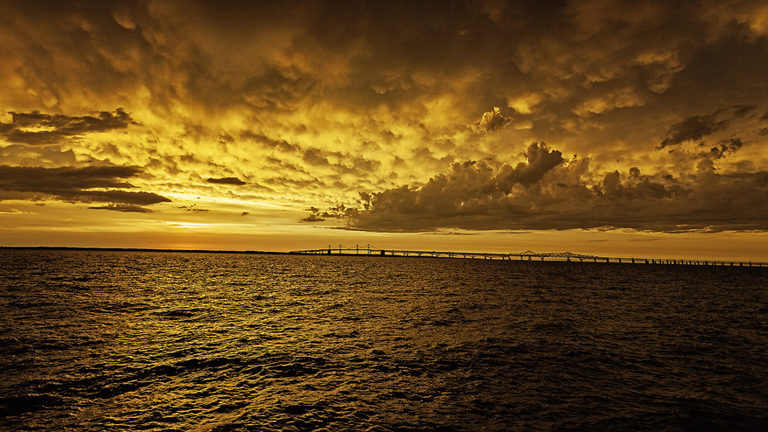Late June 2017 Hypoxia Report

photo by by Krystle Chick
Dissolved oxygen conditions in the Maryland portion of the Chesapeake Bay mainstem continued to be near average in late June, reports the Maryland Department of Natural Resources. The hypoxic water volume (areas with less than 2 mg/l oxygen) was 1.05 cubic miles, which is slightly below the late June 1985-2016 average of 1.09 cubic miles. No anoxic zones (areas with less than 0.2 mg/l oxygen) were detected.
Hypoxia in the bay extended from south of the Patapsco River to north of the York River, in waters about 25 feet below the surface to the bottom.
In the beginning of June, the National Oceanic and Atmospheric Administration, U.S. Geological Survey, University of Maryland Center for Environmental Science and University of Michigan scientists predicted a slightly larger than average hypoxic volume for the bay due to higher spring flows (January-May) and nitrogen loading from the Susquehanna River.
Crabs, fish, oysters and other creatures in the Chesapeake Bay require oxygen to survive.
Scientists and natural resource managers study the volume and duration of bay hypoxia to determine possible impacts to bay life. Each year (June-September), the Maryland Department of Natural Resources computes these volumes from data collected by Maryland and Virginia monitoring teams. Data collection is funded by these states and the Environmental Protection Agency’s Chesapeake Bay Program. Bay hypoxia monitoring and reporting will continue through the summer.
More information on Maryland’s Chesapeake Bay water quality monitoring program and results can be found here.

